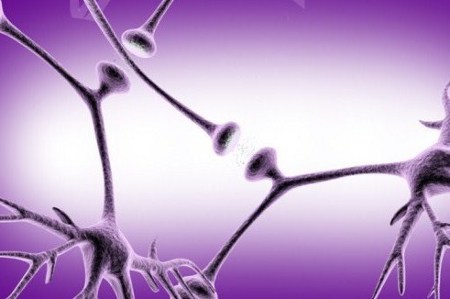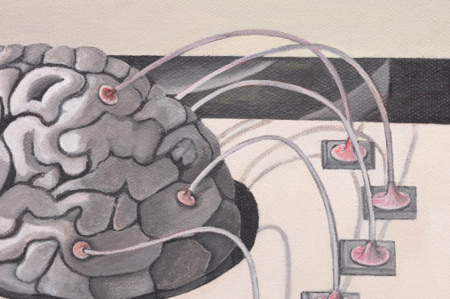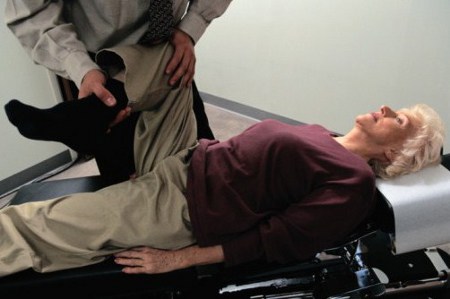Top 10 Pain Management Techniques
0 Comments
Analgesic Medications
The goal of pain management is to improve a person’s ability to function normally, both physically and emotionally. The use of analgesic or pain relieving medications is one of the most common forms of treatment. The first line of drugs are non-prescription medications that are available and sold over the counter. Acetaminophen and ibuprofen are the two most common types of non-prescription analgesics used to treat mild to moderate pain. Exceeding the recommended dosage of acetaminophen leads to liver damage. Ibuprofen may cause ulceration of the stomach or the intestines. Photo: Getty Images

Narcotic Analgesics
Narcotic analgesics are medications available only by prescription and are used to treat moderate to severe pain. Commonly prescribed narcotics include hydrocodone in combination with acetaminophen, codeine, which is sometimes prescribed in combination with acetaminophen, and hydrocodone in combination with ibuprofen. Gastrointestinal symptoms such as stomach upset and constipation, neurological symptoms such as dizziness and drowsiness, and respiratory depression are side effects associated with narcotics. Long term use of narcotics leads to addiction. Photo: Getty Images

Surgery
Surgical intervention may be necessary to treat certain conditions that cause chronic pain. Examples include cases of traumatic nerve damage, degenerative spondylolisthesis associated with spinal stenosis which results from arthritic changes in the joints, and knee replacement surgery for debilitating cases of osteoarthritis or rheumatoid arthritis. Post-operative pain is managed with oral narcotic and non-narcotic analgesic medications, intravenous patient-controllehttp://www.empowher.com/node/add/hwslideshowd analgesia, patient-controlled epidural analgesia, and nerve blocks. Intravenous patient-controlled analgesia allows the patient to safely administer small amounts of pain relieving medication as need. The medication is delivered through an intravenous line and controlled by a computerized pump. Patient-controlled epidural analgesia uses a computerized pump to deliver pain relieving medication through an epidural catheter that is placed in the patient’s back. A nerve block is an option to relieve pain following surgery that involves a small part of the body such as an arm or leg. Photo: Getty Images

Anti-seizure Medications
Medications traditionally used to control seizures are now being used to relieve pain associated with nerve damage. Anti-seizure medications appear to interfere with the abnormally excessive transmission of pain signals sent from the damaged nerves. The most frequently prescribed drug is gabapentin. Carbamazepine, along with several other anti-convulsant drugs, such as clonazepam and phenytoin, are also used to alleviate pain associated with neuropathy. Photo: Getty Images

Antidepressant Medications
Antidepressant medications, particularly the tricyclic antidepressants, effectively relieve chronic pain, even in situations when depression is not a factor. Use of antidepressants to manage pain is not approved by the FDA. The pain relieving mechanism of these drugs is not fully understood. It is theorized that antidepressants may cause an increase in the production of neurotransmitters which reduce pain signals. Pain relief is not immediate and it may take several weeks for maximum relief to be achieved. Side effects include dry mouth, blurred vision, drowsiness and changes in blood pressure. Photo: Getty Images

Acupuncture
Acupuncture is another pain managing option for people seeking symptomatic relief from pain associated with a variety of conditions such as fibromyalgia, chemotherapy-induced nausea and vomiting, migraines, and labor pain. If performed correctly, acupuncture is generally considered safe and serious side effects such as infections and punctured organs are rare. It is among the oldest healing practice in the world and is based on regulating the flow of qi, which is vital energy or life force. An acupuncture practitioner inserts extremely thin needles in the skin at strategic points along the meridians or pathways where qi is believed to flow. Photo: Getty Images

Biofeedback
Biofeedback is an alternative medicine technique used to treat chronic pain, as well as other health issues such as high blood pressure, anxiety and irritable bowel syndrome. During a biofeedback session, a therapist attaches electrodes to the patient’s skin. The sensors measure brain waves, heart rate, skin temperature and muscle tension. Through biofeedback training, the patient learns to control physiological reactions by changing thoughts. The most commonly used types of biofeedback include electromyography, which measures muscle tension, thermal, which measures skin temperature, and electroencephalography, which measures brain waves. Biofeedback is considered safe with no reported negative side effects. Photo: Getty Images

Reiki
Reiki is an ancient Japanese therapy that uses simple hands-on and visualization techniques It can promote a reduction in anxiety, muscle tension and pain. Reiki is based on the idea that everything in the universe is composed of energy and this life force energy flows around us. The goal of reiki is to improve the flow of life energy. Low life force energy increases susceptibility to discomfort, illness and disease. High life force energy promotes relaxation and awakens the body’s healing abilities. A reiki practitioner applies a gentle hands-on touch along energy centers and pathways on the head, neck, shoulders and upper chest, abdomen, legs and feet. Energy is transferred to the patient to promote relaxation, healing and a greater sense of well-being. Reiki is a safe and gentle technique which is used in many hospitals by physicians, nurses and psychologists. Photo: Getty Images

Chiropractic Pain Management
Chiropractic pain management is a form of licensed alternative medicine used to treat chronic pain. Chiropractic technique involves manipulation of the spine and joints. The aim is to help relieve pain and stiffness while improving the function of associated nerves, joints and muscles. Photo: Getty Images

Yoga
Yoga is an ancient Hindu philosophy that aims to unite the self with the Supreme Being in a state of complete awareness and tranquility. It is a discipline that includes physical and mental exercises including meditation, breathing control, and specific bodily postures. There are several forms of yoga, including ashtanga, bikram and hatha. Hatha is one of the most common styles of yoga used to reduce stress, increase fitness, and manage health conditions such as pain, anxiety and depression. Yoga decreases stress which may positively influence the emotional component of pain. Photo: Getty Images
Add a CommentComments
There are no comments yet. Be the first one and get the conversation started!